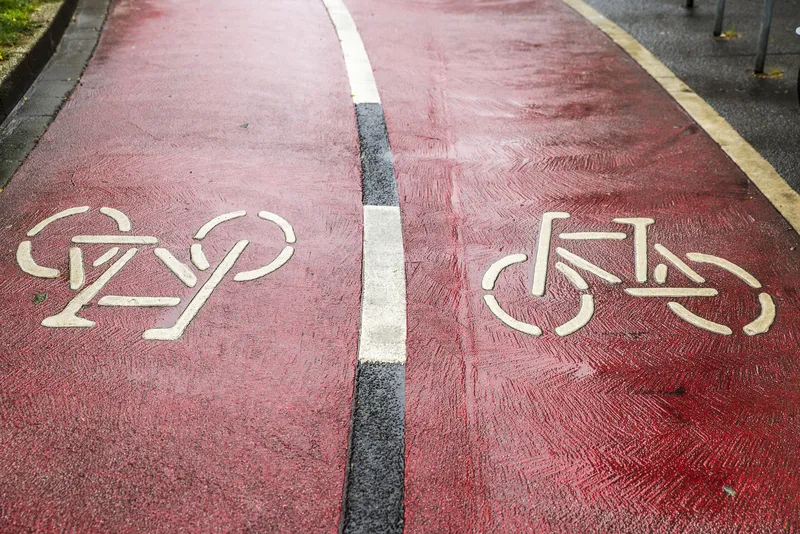According to Rail Travel, a new market report from business intelligence provider Key Note, in 2013/2014 the total value of passenger receipts for UK rail travel increased by 6.2 per cent year-on-year, and grew by 32.5 per cent over a five-year period. In addition, passenger journeys grew by 23.5 per cent over the five-year review period, with passenger kilometres travelled also growing by 17.9 per cent over the same timeframe.
For the purpose of this report, the rail industry in the UK has been split in
December 16, 2014
Read time: 3 mins
According to Rail Travel, a new market report from business intelligence provider Key Note, in 2013/2014 the total value of passenger receipts for UK rail travel increased by 6.2 per cent year-on-year, and grew by 32.5 per cent over a five-year period. In addition, passenger journeys grew by 23.5 per cent over the five-year review period, with passenger kilometres travelled also growing by 17.9 per cent over the same timeframe.
For the purpose of this report, the rail industry in the UK has been split into four distinct sectors. Firstly, National Rail, which represents the largest share of the industry in terms of passenger receipts. Secondly, urban rail services, which include underground systems such as those in London and Glasgow, in addition to other metro, light rail and tram operators. Thirdly, Northern Ireland Railway services, which are analysed separately to National Rail services in Great Britain. Finally, international rail services, which consist of the shuttle service provided by Eurotunnel that operates between Folkstone and Calais, in addition to the Eurostar passenger service.
The UK Government plays a vital role in the country’s rail sector, and continues to considerably support the industry, spending over US$7.8 billion in 2013/2014 subsidising rail travel.
This figure is an increase of 13.1 per cent on the level seen in 2009/2010. In addition, in March 2014, the Government outlined a five-year investment strategy for the sector worth an estimated US$59.7 billion. This comes alongside commitments to improve upon the UK’s high-speed rail services (HS2 and HS3), which will represent substantial investment in the UK rail industry. The Government also impacts upon the sector by regulating rail fares, which continue to rise above the rate of inflation, thereby facilitating a steady increase in overall passenger receipts.
Other trends evaluated in this report include the consumer price indices for rail travel fares, in addition to a comparison of rail against alternative modes of transport. The report analyses national rail infrastructure, including such factors as overall track length, the number of stations and the age of rolling stock. For exclusive use in this report, Key Note commissioned a survey of 1,000 people in Great Britain to evaluate consumers’ rail travel patterns, including the reasons for rail travel and the frequency of using rail services for various outings.
Looking ahead, Key Note estimates that the total value of rail receipts in the UK will grow by 25.3 per cent over the five-year period between 2014/2015 and 2018/2019. Key Note further forecasts that the number of passenger journeys on rail services in the UK will also grow robustly in the coming years, as will the overall number of passenger kilometres travelled via rail.
For the purpose of this report, the rail industry in the UK has been split into four distinct sectors. Firstly, National Rail, which represents the largest share of the industry in terms of passenger receipts. Secondly, urban rail services, which include underground systems such as those in London and Glasgow, in addition to other metro, light rail and tram operators. Thirdly, Northern Ireland Railway services, which are analysed separately to National Rail services in Great Britain. Finally, international rail services, which consist of the shuttle service provided by Eurotunnel that operates between Folkstone and Calais, in addition to the Eurostar passenger service.
The UK Government plays a vital role in the country’s rail sector, and continues to considerably support the industry, spending over US$7.8 billion in 2013/2014 subsidising rail travel.
This figure is an increase of 13.1 per cent on the level seen in 2009/2010. In addition, in March 2014, the Government outlined a five-year investment strategy for the sector worth an estimated US$59.7 billion. This comes alongside commitments to improve upon the UK’s high-speed rail services (HS2 and HS3), which will represent substantial investment in the UK rail industry. The Government also impacts upon the sector by regulating rail fares, which continue to rise above the rate of inflation, thereby facilitating a steady increase in overall passenger receipts.
Other trends evaluated in this report include the consumer price indices for rail travel fares, in addition to a comparison of rail against alternative modes of transport. The report analyses national rail infrastructure, including such factors as overall track length, the number of stations and the age of rolling stock. For exclusive use in this report, Key Note commissioned a survey of 1,000 people in Great Britain to evaluate consumers’ rail travel patterns, including the reasons for rail travel and the frequency of using rail services for various outings.
Looking ahead, Key Note estimates that the total value of rail receipts in the UK will grow by 25.3 per cent over the five-year period between 2014/2015 and 2018/2019. Key Note further forecasts that the number of passenger journeys on rail services in the UK will also grow robustly in the coming years, as will the overall number of passenger kilometres travelled via rail.









